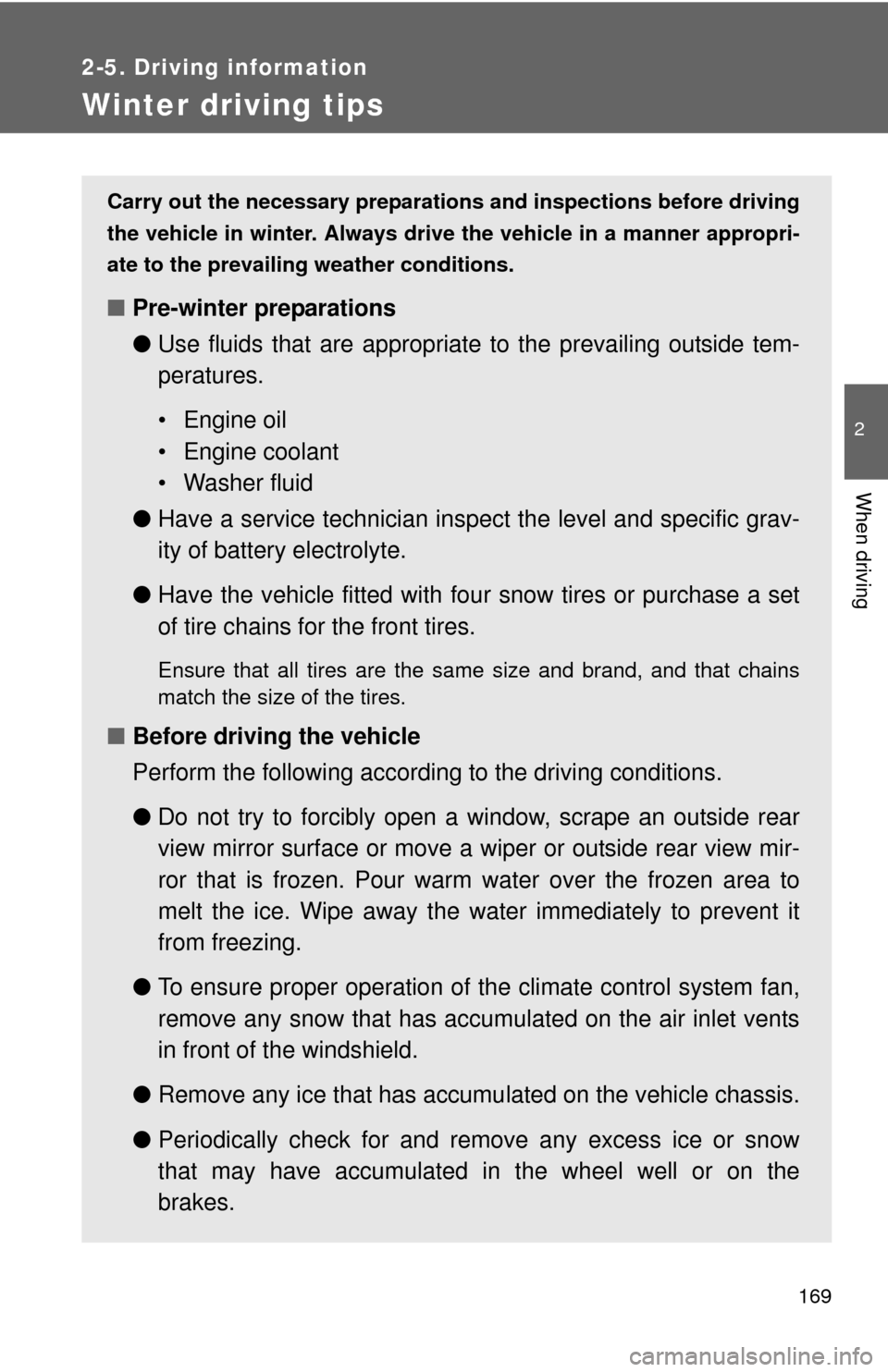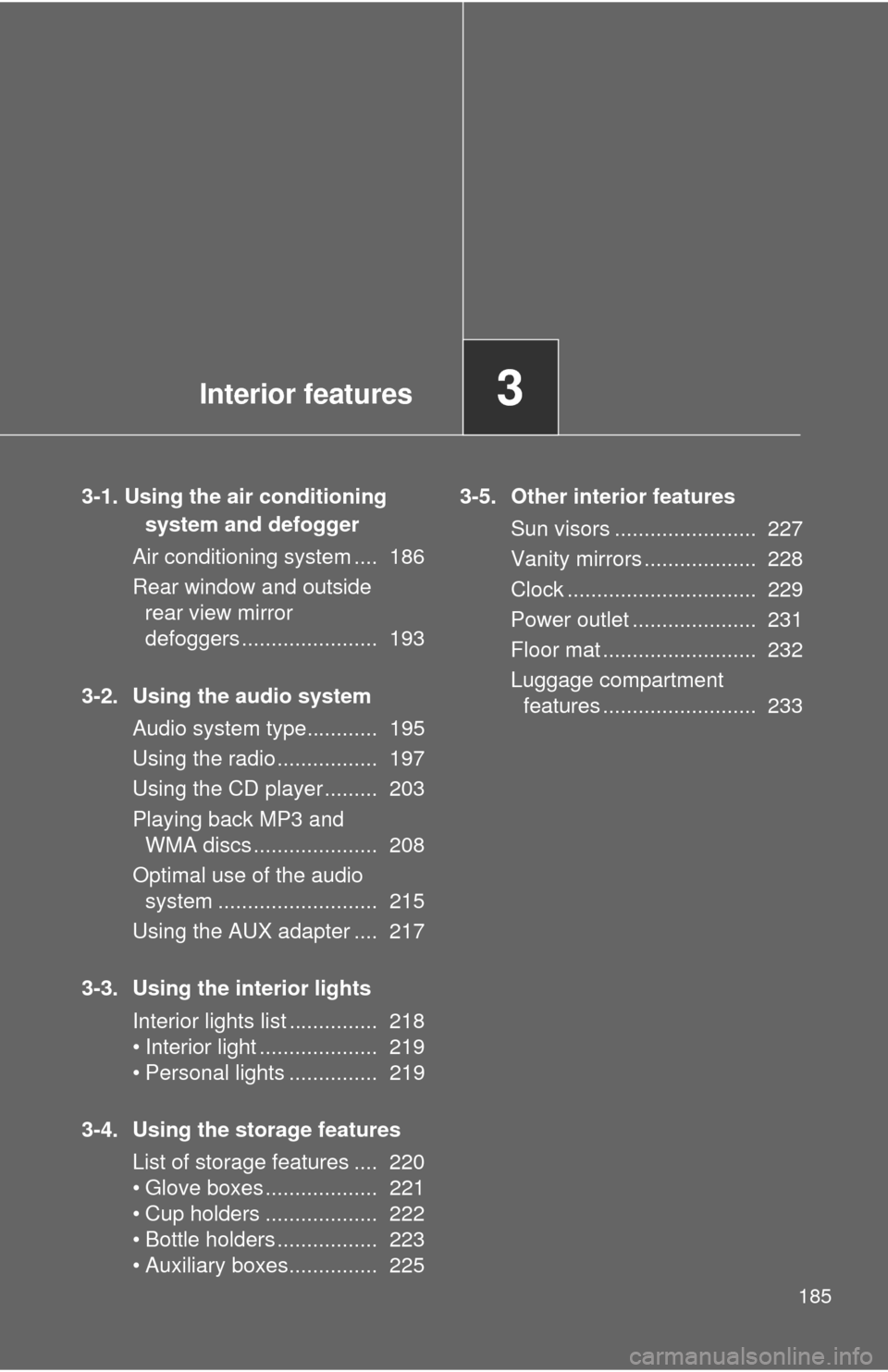Page 98 of 400

98 1-7. Safety information
Condition and operation in the front passenger occupant classification system
■Adult*1
■Child*3 or child restraint system*4
■Unoccupied
Indicator/
warning lightAIR BAG ON and AIR BAG OFF indicator
lightsAIR BAG ON
SRS warning light Off
Front passenger’s seat belt reminder light
Flashing
*2
DevicesFront passenger airbag
Activated Side airbag on the front passenger seat
Curtain shield airbag in the front passenger
side
Front passenger’s seat belt pretensioner
Indicator/
warning lightAIR BAG ON and AIR BAG OFF indicator
lightsAIR BAG
OFF
*5
SRS warning light
Off
Front passenger’s seat belt reminder light
Flashing
*2
DevicesFront passenger airbag Deactivated
Side airbag on the front passenger seat
Activated Curtain shield airbag in the front passenger
side
Front passenger’s seat belt pretensioner
Indicator/
warning lightAIR BAG ON and AIR BAG OFF indicator
lights
Not illuminated
SRS warning light
Off
Front passenger’s seat belt reminder light
DevicesFront passenger airbag Deactivated
Side airbag on the front passenger seat
Activated
Curtain shield airbag in the front passenger
side
Front passenger’s seat belt pretensioner Deactivated
Page 169 of 400

169
2-5. Driving information
2
When driving
Winter driving tips
Carry out the necessary preparations and inspections before driving
the vehicle in winter. Always drive the vehicle in a manner appropri-
ate to the prevailing weather conditions.
■Pre-winter preparations
●Use fluids that are appropriate to the prevailing outside tem-
peratures.
• Engine oil
• Engine coolant
• Washer fluid
●Have a service technician inspect the level and specific grav-
ity of battery electrolyte.
●Have the vehicle fitted with four snow tires or purchase a set
of tire chains for the front tires.
Ensure that all tires are the same size and brand, and that chains
match the size of the tires.
■Before driving the vehicle
Perform the following according to the driving conditions.
●Do not try to forcibly open a window, scrape an outside rear
view mirror surface or move a wiper or outside rear view mir-
ror that is frozen. Pour warm water over the frozen area to
melt the ice. Wipe away the water immediately to prevent it
from freezing.
●To ensure proper operation of the climate control system fan,
remove any snow that has accumulated on the air inlet vents
in front of the windshield.
●Remove any ice that has accumulated on the vehicle chassis.
●Periodically check for and remove any excess ice or snow
that may have accumulated in the wheel well or on the
brakes.
Page 179 of 400

179 2-5. Driving information
2
When driving
●In order to maintain engine braking efficiency, do not use the trans-
mission in D (automatic transmission) or 5 (manual transmission).
●Due to the added load of the trailer, your vehicle’s engine may
overheat on hot days (at temperatures over 85°F [30°C]) when
driving up a long or steep grade. If the engine coolant temperature
gauge indicates overheating, immediately turn off the air condition-
ing (if in use), pull your vehicle off the road and stop in a safe spot.
(P. 345)
●Always place wheel blocks under both the vehicle and the trailer
wheels when parking. Apply the parking brake firmly, and put the
transmission in P (automatic transmission) or in 1 or R (manual
transmission). Avoid parking on a slope, but if unavoidable, do so
only after performing the following:
Apply the brakes and keep them applied.
Have someone place wheel blocks under both the vehicle and
trailer wheels.
When the wheel blocks are in place, release the brakes slowly
until the blocks absorb the load.
Apply the parking brake firmly.
Shift into 1 or R (manual transmission) or P (automatic trans-
mission) and turn off the engine.
●When restarting after parking on a slope:
With the transmission in P (automatic transmission) or the
clutch pedal (manual transmission) depressed, start the
engine. On vehicles with an automatic transmission, be sure
to keep the brake pedal pressed.
Shift into a forward gear. If reversing, shift into R.
Release the parking brake (also brake pedal on vehicles with
an automatic transmission), and slowly pull or back away from
the wheel blocks. Stop and apply the brakes.
Have someone retrieve the blocks.
Page 185 of 400

Interior features3
185
3-1. Using the air conditioning
system and defogger
Air conditioning system .... 186
Rear window and outside
rear view mirror
defoggers ....................... 193
3-2. Using the audio system
Audio system type............ 195
Using the radio ................. 197
Using the CD player ......... 203
Playing back MP3 and
WMA discs ..................... 208
Optimal use of the audio
system ........................... 215
Using the AUX adapter .... 217
3-3. Using the interior lights
Interior lights list ............... 218
• Interior light .................... 219
• Personal lights ............... 219
3-4. Using the storage features
List of storage features .... 220
• Glove boxes ................... 221
• Cup holders ................... 222
• Bottle holders ................. 223
• Auxiliary boxes............... 2253-5. Other interior features
Sun visors ........................ 227
Vanity mirrors ................... 228
Clock ................................ 229
Power outlet ..................... 231
Floor mat .......................... 232
Luggage compartment
features .......................... 233
Page 186 of 400
186
3-1. Using the air conditioning system and defogger
Air conditioning system
Adjusting the settings
■Adjusting the temperature setting
Turn the temperature control dial clockwise (warm) or counter-
clockwise (cool).
If is not pressed, the system will blow ambient temperature air or
heated air.
For quick cooling, turn the temperature control dial to the “
MAX A/C”
position and set the air intake selection dial to (recirculated air)
mode.
Fan speed control dial
Air outlet selection dialAir conditioning
ON/OFF switch
Temperature control dial Air intake selection dial
Page 187 of 400
187 3-1. Using the air conditioning system and defogger
3
Interior features
■Adjusting the fan speed
Turn the fan speed control dial clockwise (increase) or counter-
clockwise (decrease).
Set the dial to “0” to turn the fan off.
■Selecting the air outlets
Set the air outlet selection dial to an appropriate position.
The positions between the air outlet selections shown below can also be
selected for more detailed adjustment.
When the dial is set to , air
flows to the upper body.
When the dial is set to , air
flows to the upper body and feet.
: Some models
Page 188 of 400
188 3-1. Using the air conditioning system and defogger
When the dial is set to ,
mainly air flows to the feet.
: Some models
When the dial is set to , air
flows to the feet and the wind-
shield defogger operates.
: Some models
When the dial is set to , air
flows to the windshield and side
windows to defog them.
Set the air intake selection dial to
(outside air) mode.
Pressing
to turn the air
conditioning on clears the wind-
shield and side windows faster.
■Selecting the air intake modes
Set the air intake selection dial to (outside air) mode or
(recirculated air) mode.
Page 189 of 400
189 3-1. Using the air conditioning system and defogger
3
Interior features
Adjusting the position of the air outlets
Center outlets
Direct air flow to the left or right,
up or down.